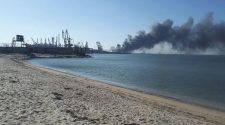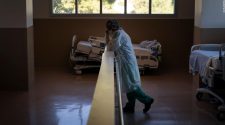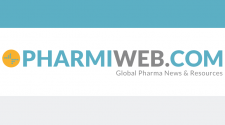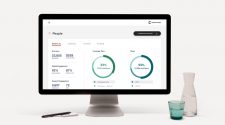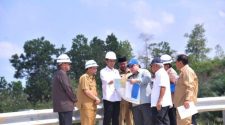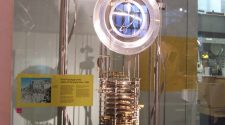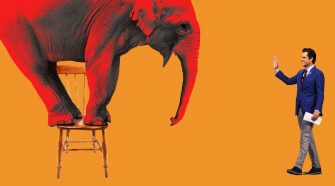Image source: The Motley Fool.
Niu Technologies (NASDAQ:NIU)
Q4 2019 Earnings Call
Mar 16, 2020, 8:00 a.m. ET
Contents:
- Prepared Remarks
- Questions and Answers
- Call Participants
Prepared Remarks:
Operator
Ladies and gentlemen, thank you for standing by, and welcome to the Niu Technologies’ Fourth Quarter 2019 Earnings Release Conference Call. [Operator Instructions]. There will be a presentation followed by a question-and-answer session. [Operator Instructions]. I would now like to hand the conference over to your first speaker today, Mr. Jason Yang, Investor Relations Manager. Thank you. Please go ahead.
Jason Yang — Investor Relations Manager
Thank you, Operator. Hello, everyone. Welcome to today’s conference call to discuss Niu Technologies’ results for the fourth quarter and full year 2019. The call is being webcast from Company’s IR website. An investor presentation and the replay of the call will be available soon at ir.niu.com. Please note today’s discussion will contain forward-looking statements made under the safe harbor provisions of the United States Private Securities Litigation Reform Act of 1995.
Forward-looking statements involve risks, uncertainties, assumptions and other factors. The Company’s actual results may be materially different from those expressed today. Further information regarding the risk factors is included in the Company’s public filings with the Securities and Exchange Commission. The Company does not assume any obligation to update any forward-looking statements, except as required by law.
Our earnings press release and this call include discussions of certain non-GAAP financial measures. The press release contains a definition of non-GAAP financial measures and a reconciliation of GAAP to non-GAAP financial results. On the call with me today are our CEO, Dr. Yan Li, and the CFO, Mr. Hardy Zhang.
Now, let me turn the call over to Yan.
Yan Li — Chairman, Chief Executive Officer, Chief Operating Officer
All right. Thanks, Jason, and thanks everyone for joining us on the call today. So on the performance, our sales volume has increased by 14% in Q4 2019, and by 24% for the full year of 2019. Our revenue has also increased by 25% in Q4 and by 41%, full year 2019. We have also enhanced our gross margin, achieving a historically high gross margin at 26.1% and net profit margin at 11.3% in Q4 2019.
All financial data were beyond our expectations. Now we continue to build our leadership in urban mobility with product and technology development, event and user base activity model [Technical Issues] we launched our U-GT [Phonetic] in late December. U-GT is an upgraded high end version of U Series, targeting primarily Europe and the US market. U-GT inherited its simplistic design style and lightweight body of our award-winning U series with increased wheel size and performance, with the retail price started at a EUR6,999 [Phonetic] in Europe.
Second, we have launched our first straddle electric motorcycle product R, and our first three-wheel electric motorcycle T at the CES in January. Both are revolutionary products to redefine urban mobility. R is our power performance product. It has a top speed of 160 kilometer per hour and the maximum drive range of 130 kilometers. It comes with a maximum 30 kilowatts mid-mounted motor, and a 7-kilowatt/hour portable dual batteries.
R primarily targets Europe and the US market as well as high-end motorcycle market in China. As a high-end straddle motorcycle and listed our new brand in urban mobility. Our video of R and T on Douyin has received more than 25 million views as one of the top viewed videos on our Douyin platform. So this is just another testimonial on the popularity of this product. We expect R will be in the market in late 2020. While R focuses on performance, T focuses on comfort and smart commute in urban mobility. A self-balancing three-wheeler with the roof covered, T is the urban all weather commuter with a top speed of 80-kilometer per hour and a maximum drive range of 200 kilometers. It’s spacious to take additional passenger and with extra cargo space.
In addition, T is a level 2 autonomous driving capable, including adaptive cruise control, self parking, and a collision detection system. It is the perfect urban mobility vehicle for individuals and couple commuters, easy to use, robust to all weather conditions and is smart for safe driving.
Now, besides the new products, we continue to enhance our brand awareness through product launches, viral marketing, and the targeted marketing. First, we attended for the first time, CES in the United States in January. At the CES, we successfully launched the two revolutionary products, R and T as mentioned before, and continue to strengthen our brand of style, technology and freedom in urban mobility. We received more than 200 media coverage with more than 2,000 articles published.
We also broadcasted the launch on social media platforms, achieved around 120 million views on Weibo and 34 million views on Douyin. Second, we continue to create a viral marketing on social media platform. Our quarterly Douyin views increased from — increased to 20 million in 2019 Q4 from just a few million in the first three quarters in 2019. And due to the popularity of short video platforms, we plan to invest more resources on Douyin, Kuaishou, and Bilibili as well.
Internationally, our 30-plus KOLs across Europe has also created more than thousand pieces of new branded content, displayed them on Instagram and YouTube. The highlights of those came from key strategic cities such as Hamburg, Paris, Frankfurt, and Milan. And lastly, a Chinese TV series called [Indecipherable] was aired in February, this year and has become one of the most popular shows in China recently.
Our scooters were used numerous times as the commuting vehicle in this TV series, selected by the casts due to our fashionable design. This has achieved more than 2.6 billion views and the show is still running. Now, supported by the new products, the enhanced customer engagement and the brand awareness, we continue to expand our footprint. By end of Q4 2019, the number of franchise stores in China has reached to 1,050 as we added a total of 290 stores in the entire year of 2019.
We further expanded our international footprint to 38 countries with 26 flagship and premium stores overseas and 1,000 plus dealers. Now despite the significant progress that we made in Q4 2019, our business operation has been disrupted by the outbreak of coronavirus in Q1 2020. First, our sales in China has been impacted significantly. Most of the cities has shutdown business for part, or the entire February. So we started February with all of our stores closed, but ended with 65% of our stores opened at the end of February for business.
Furthermore, as people were recommended to stay home and work from home, there were little retail traffic or retail demand. Now, we started to observe recovery in March as businesses start to be backing operation, and up until now, 85% of our stores have opened for business. Now in addition for the past month and a half, we also focused on store sales improvement, linking offline stores with online presence.
In February, we trained all our store operators to set up online virtual stores via WeChat, and provided online sales consultations to potential customers. We also marketed the online purchase offline delivery campaign and received promising results. Our online to offline orders has increased by 2.5x, over the same time last year. Second, our international sales have also been impacted due to the disruption in production and shipping. Our factory was shut down for the first half of February and after the factory reopened in mid-February, we also experienced a shortage of front-line workers as many of them were still in quarantine in their hometown.
Now our upstream suppliers also experienced similar situation. Now this disruption has caused slight delay in our international order fulfillment. Amid the current outbreak globally, we also focused on expanding our international footprint, enter additional countries in South America, as well as establish a stronger footprint in Southeast Asia to diversify the international sales.
Now, despite the current setbacks, we remain very positive about our business performance after the coronavirus outbreak is over. First, the long-term industry trend or the fundamental market demand remains unchanged. Urban mobility is the necessity and there is always a strong demand for more convenient, more efficient, and cleaner urban commuting solutions.
Second, we observed that in many market that the forced quarantine has further shifted the consumer focus from offline to online, which we will benefit from due to our strong presence in both online and offline for marketing and sales. Now, in the meantime, we are managing our business in a very prudent manner and ready to accelerate as soon as the market starts to recover.
Now, I will turn the call over to Hardy to discuss our financial results. Hardy?
Hardy Peng Zhang — Chief Financial Officer
Thank you, Yan, and hello everyone. Before I discuss the Q4 financials, I would like to first share with you our cash and liquidity status, because I think some of you may have concerns. The short answer is, we do not foresee cash and liquidity problem in the short term based on our current estimate. By the end of last year we had cash, term deposits and short-term investments of RMB765 million in total.
In early February, when the Chinese government first announced the restrictive measures to combat the virus, we did a stress testing and run different scenarios to assess the impact. Subsequently, we took proactive actions to manage our cash spending and the working capital. In the meantime, we have been monitoring cash sales on daily basis. We are glad to see cash sales coming in consistently during the past few weeks.
In terms of debt, we have short-term bank borrowings of RMB217 million as of December 31st last year. Out of the total borrowings, only RMB20 million is credit loan, the rest are cash pledged loans. We pledged our US dollar cash to banks and borrowed RMB loans to achieve a reasonable cash balance in different currencies. Considering our cash balance and the debt structure, we do not foresee short-term liquidity problem.
Of course, to ensure that we always have a plan B, we keep active communications with our relationship banks. They are very supportive and stand aside with us to provide support while needed. I hope, I’ve addressed your concerns, and let’s turn back to discuss our Q4 financials. Our press release contains all the figures and comparisons you need. We have also uploaded Excel format figures to our IR website for your easy reference.
As I review our financial performance, keep in mind that we are referring to the fourth quarter figures, unless I say otherwise, and that all monetary figures are RMB, unless otherwise noted. Our Q4 sales volume reached 106,000 unit, increased by 13.5% year-over-year in line with our expectations. Total revenues rose 25% to RMB536 million, above the guidance we provided earlier, mainly because of two reasons. First, the product mix for e-scooters sales are more favorable. The higher price N and M series continue to take a decent proportion of our total sales volume. In Q4, N and M series in total accounted for 40% of sales volume, compared with 35% in Q3.
Second, strong sales in accessories, spare parts and services. In Q4, for each e-scooter sold, we also sold RMB820 accessory spare parts and services, compared with RMB524 in Q3 and RMB327 in Q4 2018. The strong sales came from the spare parts sold to our overseas sharing operator, and to our after sales service providers.
Our e-commerce platforms also had a strong sales in accessory and services in the fourth quarter, benefiting from the larger user base, higher brand recognition and more effective marketing activities. Revenue for scooter was RMB5,046, up 10% year-over-year. That growth was mainly driven by strong sales of our accessory, spare parts and the services as I mentioned above.
Gross margin was 26.1%, 12.6 percentage points better than this time last year, and a 3.9 percentage points higher sequentially. Our full-year gross margin was 23.4%, 10% better than full year 2018. Q4 margin expansion was helped by the similar factor as we discussed during the last quarter, being the overall favorable revenue mix and cost cutting efforts.
Operating expenses on comparable basis increased in line with the growth of our business. Our total operating expenses excluding share-based compensation was RMB86.5 million, increased by 31% year-over-year. Operating expenses as a percentage of revenue were 16.1%, 0.6 percentage points higher than the same time last year.
The increase was mainly caused by the higher G&A expense, because we made provisions for bad debt, and had additional professional service fees related to our global trademark registration. When you look at the full year 2019 numbers, our total operating expenses excluding share-based compensation were 14.9% of total revenue, reduced by 1.9% compared with 2018.
We achieved the leverage in our operating expenses on full-year basis. In the fourth quarter, we have RMB13.5 million government grants, mainly related to our new factory in Changzhou which commenced operation in December. For full year 2019, we had RMB29.8 million government grants, RMB22.6 million is related to the new factory expansion and the tax paid, remaining are one-off grants.
During 2020, we expect to continue to receive government grants, but it will be a much smaller amount. Our GAAP net income in Q4 were RMB60.7 million, with net income margin of 11.3%. Our GAAP net income for full year 2019 was RMB190 million, with net income margin, 9.2%. The margin is higher because of above mentioned improved gross margin, the operating leverage achieved, government grants and also because of the limited income tax expense, as the Company benefited from the accumulated loss carry forward from earlier years.
In the coming 2020, when the Company continue to generate profit, we expect to pay the regular income tax during the year. Turning to our balance sheet, we ended the quarter with RMB765 million cash, term deposits and short-term investment. Capital expenditure were RMB42 million in Q4, mainly for building the new manufacturing facility in Changzhou and for expanding our retail sales network.
Short-term bank loan was reduced by RMB51 million compared with Q3 as they repaid bank loan. For full year 2019, our operating cash flow was positive RMB201 [Phonetic] million. Capital expenditure was RMB164 million. Now, let’s turn to guidance. We expect first quarter revenue to be in the range of RMB195 million to RMB265 million, a decrease of 45% to 25% year-over-year.
Please keep in mind that this forecast reflects our current and the preliminary expectation, and it could change in light of the uncertainty related to the COVID-19 developments. As Yan already mentioned, our operation are affected by the outbreak in many aspects in the short term, but while taking a longer-term view, we remain positive about our business perspective.
With that, let’s now open the call for any question you may have for us. Operator, please go ahead.
Questions and Answers:
Operator
Ladies and gentlemen, we will now begin the question-and-answer session. [Operator Instructions]. Your first question comes from the line of Winnie Dong of Piper Sandler. Please ask your question.
Winnie Dong — Piper Sandler — Analyst
Hi, good morning. Thank you so much for taking my question, I’m in for Alex Potter. I’m wondering, so you have your guidance down for March, down 25% to down 45%. Can you elaborate on what kind of scenarios you’re taking into that wide range? What would get us to the higher end and what will get us to the lower end? And then just any sort of on the ground development that you’re hearing in March as we stand now? Obviously a lot of impact has spread to Europe and to the West, but anything that you’re seeing in China, if you can share that, that’ll be great. Thank you.
Hardy Peng Zhang — Chief Financial Officer
Yeah. For the guidance, yes, we gave a wide range, it’s 45% to 25% decrease compared with last year and the basis for giving that is, we first took a conservative estimate based on the orders we more or less already have on our books. That’s including both the orders from overseas distributors and also the estimated orders from domestic distributors.
And because as you may know, there is seasonality in the sales of e-scooters in China and the Q1 is the slowest season, and normally the sales begin to pick up from March. Therefore, we expect the second half of March will be a quite key two weeks for us to sell additional scooters. Therefore we are betting on the additional 20% from the second half of March. Mainly because, if — a few things. First, if the government lifted some of the restrictive measures for store openings, then the additional shops can open in the next two weeks. As Yan already mentioned, up to now we have only 85% shops opened. If the additional 15% shop can open, then we can generate additional revenue from our retail shops. This is the first reason.
Second reason, as we have seen some of our distributors who have their shop opened, they are increasing their retail sales, therefore, we expect they will continue to order from us. However, as I said, there is lot of uncertainties during — due to the current outbreak, therefore we have taken conservative approach, and also give a wider range due to the risks involved. And I’ll leave it to Yan to comment on the rest.
Yan Li — Chairman, Chief Executive Officer, Chief Operating Officer
Yeah, I think Hardy pretty much covered it. It’s really — we’re actually watching the situation on a daily basis at this point. We look at the retail sales in March, basically the first two weeks like the — if I look at the second week, versus the first week, the retail sales actually increased by almost 10% to 15%. So it’s really about the third week and the fourth week, how that picks up and how we fulfill the orders.
At this point, our factories has pretty much back online, so we have no issues of fulfilling the orders. It’s really — the market need to be picked up, both from the China side as well as we’re looking at the Europe and the US as well.
Jason Yang — Investor Relations Manager
Hope that answers your question.
Winnie Dong — Piper Sandler — Analyst
Yes, that’s very helpful. Thank you very much.
Operator
Your next question comes from the line of Vincent Yu of Needham & Company. Please ask your question.
Vincent Yu — Needham & Company — Analyst
Hi, management. I have a few questions. First question is trying to understand what’s our view in international market in first half 2020 especially when the European like the — outbreak continue to go on? And the second question is, what’s our view in gross margin in the short term to large term, and especially, how big headwind we should expect especially when overseas market is being impacted?
Third question is, what’s our view on our 2020 opex and the capex plan given the industry headwinds? Thanks a lot.
Yan Li — Chairman, Chief Executive Officer, Chief Operating Officer
I’ll cover the market [Speech Overlap]. Okay. Let me — so this is Yan Li. I’ll cover the international market, I’ll have Hardy cover the gross margin, the capex, opex as well. So I mean to be frankly, I think, we are actually watching the international market on a daily basis right now. So as — if you look at last year, the — I think the European sales represent roughly about 70% or — 60% to 70% of our sales internationally, plus the US market probably represents about 80% of our sales.
So, those — we have orders from European distributors and we have orders from US distributors as well as some of the — the sharing operators in Europe and the United States. And so those are orders actually in our backlog at this point, we’re actually try to fulfill. And they will actually serve as a basis for the first half of 2020.
Then, having said that, right, it’s really depends on how you know, obviously our sales operation has been impacted, retail sales operation has been impacted. For example, Italy where initially we have about — we planned actually to build up about 10 to 20 flagship stores in Italy, and right now we only have a few. And then the entire country has practically got shutdown, so that retail sales practically [Phonetic] gone for the few weeks.
So we’re actually watching the situation on daily basis at this point. Hardy, on the gross margin?
Hardy Peng Zhang — Chief Financial Officer
Yeah. And for the gross margin, for the full year 2019, our gross margin was around 23%. And for the Q1 this year, we do expect some of the decrease of gross margin, mainly because our factory cannot work beyond the full capacity.
However, for the full year 2020, we are still have the plan to at least keep the same gross margin as what we already achieved in 2019. This couple of initiatives, we have already started since the end of last year, one of the things is we are trying to renegotiate some of the component costs with different suppliers. And we made progress with many of them, therefore, we do see continuous cost opportunities.
Secondly, as you know, we commenced the operation in our new manufacturing facility in Changzhou and that facility was designed by ourselves, therefore, we do expect higher efficiency from this new facility. And very lastly, as we continue to improve our revenue mix, including both the accessory, spare parts and also some of the international sales, we do expect some potential upside from the revenue mix.
Overall speaking, we target to achieve at least the same gross margin as what we have in 2019. So this is the gross margin. And to answer your last question on the opex and capex. For the opex, as a percentage of revenue in 2019, it was around 15% of our revenue. Giving we expect it to continue to grow in 2020, we think we could probably at least maintain the 15% and maybe we can even achieve further synergies or leverage from operating expenses.
In terms of capex, during 2020, there is two areas where we want to spend the money. One is to continue to expand our retail sales network. Because of the — this coronavirus outbreak, we are reevaluating how many shops we need to open, but anyways, I think, maybe RMB50 million, to RMB100 million will be more than enough for us to open all the retail shops, which we need. The second area we want to spend money is, we reserved a piece of land next to our current facility, and we do have a plan to acquire at least the land use right of that facility.
And therefore, we can ready to construct new factory, whenever needed in China because of new national standard implementation last year. Chinese government gave us three-year transition period for the consumers to replace their e-scooter or bicycles. Therefore, we do expect some of the increase in demand during 2021 and also 2022.
Therefore, we do believe we need to get ready for some of the capacities. Therefore these are the two areas that we mainly spend the money. But they are more or less in our control and we can base on how the things develop to decide how much and also how fast we spend the money. Hopefully, this answers the question. You have anything to add?
Yan Li — Chairman, Chief Executive Officer, Chief Operating Officer
Vincent, just actually one thing I wanted to mention on your first question is actually besides your — there is one thing we’re trying, what we have done and actually we believe actually will help the international market this year, as we’re diversifying our revenue streams, not just from used to be Europe and the United States represent 80% of market, but literally, starting at the second half last year as we actually expanded to more countries, for example, we’ve successfully entered Japan, we’re well in Korea. We are actually starting to develop more businesses in Southeast Asia. And just recently, we actually signed bunch of — quite a few distributor agreement in South America.
So obviously some of sales actually whether it will show up in Q2 or second half of Q2, it depends. It also depends on how the situation in those countries actually turned out to. But I think as a — if I look at in the long run, not for the entire year, it actually open up more markets for us, which actually help us to basically diverse — to reduce the risk.
Vincent Yu — Needham & Company — Analyst
Got it. Thank you very much for the answers, guys.
Operator
[Operator Instructions]. Your next question comes from the line of Bin Wang of Credit Suisse. Please ask your question.
Bin Wang — Credit Suisse — Analyst
Thank you. I actually have three questions. Number one is about volume growth in the past three months. If you will see, you guide 25% to 45% revenue decline — alone decline, because the ASP [Phonetic] increased by 5% last year. So volume guidance is netted to be 20% to 40% decline.
So if that is a case, can you provide by March, say what’s the number in January, what’s the number in February, and what’s that in the March? Can I assume that March will be much higher growth compared to the February, so we see a sequential improving trend? That’s the number one, about the volume growth.
And number two is about the new product. We’re actually expecting you relaunching the M-series, MQi because it’s not country’s [Phonetic] the motorcycle, it didn’t reach into the e-scooter category. So when the new design and pass [Phonetic], we are back to the e-scooter category, that actually were key driver of our volume growth this year. That’s the second question.
And third one is about the cost reduction. We actually observed the battery price has been declined around 28% year-over-year in the first quarter this year and if you see sequential also increased — declined by around 20% Q-on-Q. So this actually is the — only the battery. Can I assume a similar pricing decline for the e-scooter battery as well? So if it is the case, can I assume 20% of cost reduction in the battery price? Thank you.
Hardy Peng Zhang — Chief Financial Officer
So let’s start with your first question about the volume for the first three months. Normally we — look, we combine January and the February together because different year the Chinese New Year are on different months. So if you combine January and February, our volume was down around 60% compared with last year. But in March, at least in the first two weeks, we have seen volume down only 20% to 30%. So we do see a improvement in the first two weeks of March and we continue to see improvement during the past few days.
So this is the answer for the first question on the volume. For the second, for the new product, I will leave to Yan to comment.
Yan Li — Chairman, Chief Executive Officer, Chief Operating Officer
So on the product part, so we do have a plan to not just have one series also had two product that combine with the Chinese new regulations on electric bicycles. Those products were scheduled to be launched in April, but now actually due to the coronavirus outbreak, we had to push it basically — it created a delay roughly about a month or so. So we are actually tried to — the entire team tried to work really hard to actually try to accelerate that schedule, such that we can actually see the product either by end of April or early May. The delays mainly needless to say, entirely — the entire country got shut down for a month or a month and more.
So it’s actually very difficult to accelerate a product development. So we’re trying hard on that one. So, and also we do have a high hope on those two products, especially the one first, on the one Bin you mentioned the new M series that will be actually a full-covered electric bicycle product. It will have the — you heard the design style of our M series by same time complying with the China new regulations. I think people be expecting that product since last year.
And finally, we should be able to give what people want in Q2 this year.
Hardy Peng Zhang — Chief Financial Officer
And just to add to Yan’s point on the second — your second question about the new M. We have successfully got the certifications for that product. So I think that’s one of the key milestone we already achieved. And to answer your third question about cost reduction. I think during 2019, we have seen the whole battery including battery cell, also battery pack, the cost has reduced around 9%, during 2019. And for 2020, based on the current estimate, we see at least a 5% to 10% reduction, and this is before the coronavirus outbreak.
But this outbreak may give us additional leverage to continue to negotiate the price down. So that’s our current expectation, probably 5% to 10% cost reduction for the battery cell.
Bin Wang — Credit Suisse — Analyst
Thank you.
Operator
[Operator Instructions]. There are no further question at this time, I would now like to hand the conference back to today’s presenter. Please continue.
Yan Li — Chairman, Chief Executive Officer, Chief Operating Officer
Well, thank you, operator and thank you all for participating in today’s call and for your support. We appreciate your interest. I look forward to reporting to you again next quarter on our progress. Thank you.
Hardy Peng Zhang — Chief Financial Officer
Thank you.
Operator
[Operator Closing Remarks].
Duration: 35 minutes
Call participants:
Jason Yang — Investor Relations Manager
Yan Li — Chairman, Chief Executive Officer, Chief Operating Officer
Hardy Peng Zhang — Chief Financial Officer
Winnie Dong — Piper Sandler — Analyst
Vincent Yu — Needham & Company — Analyst
Bin Wang — Credit Suisse — Analyst
More NIU analysis
All earnings call transcripts


